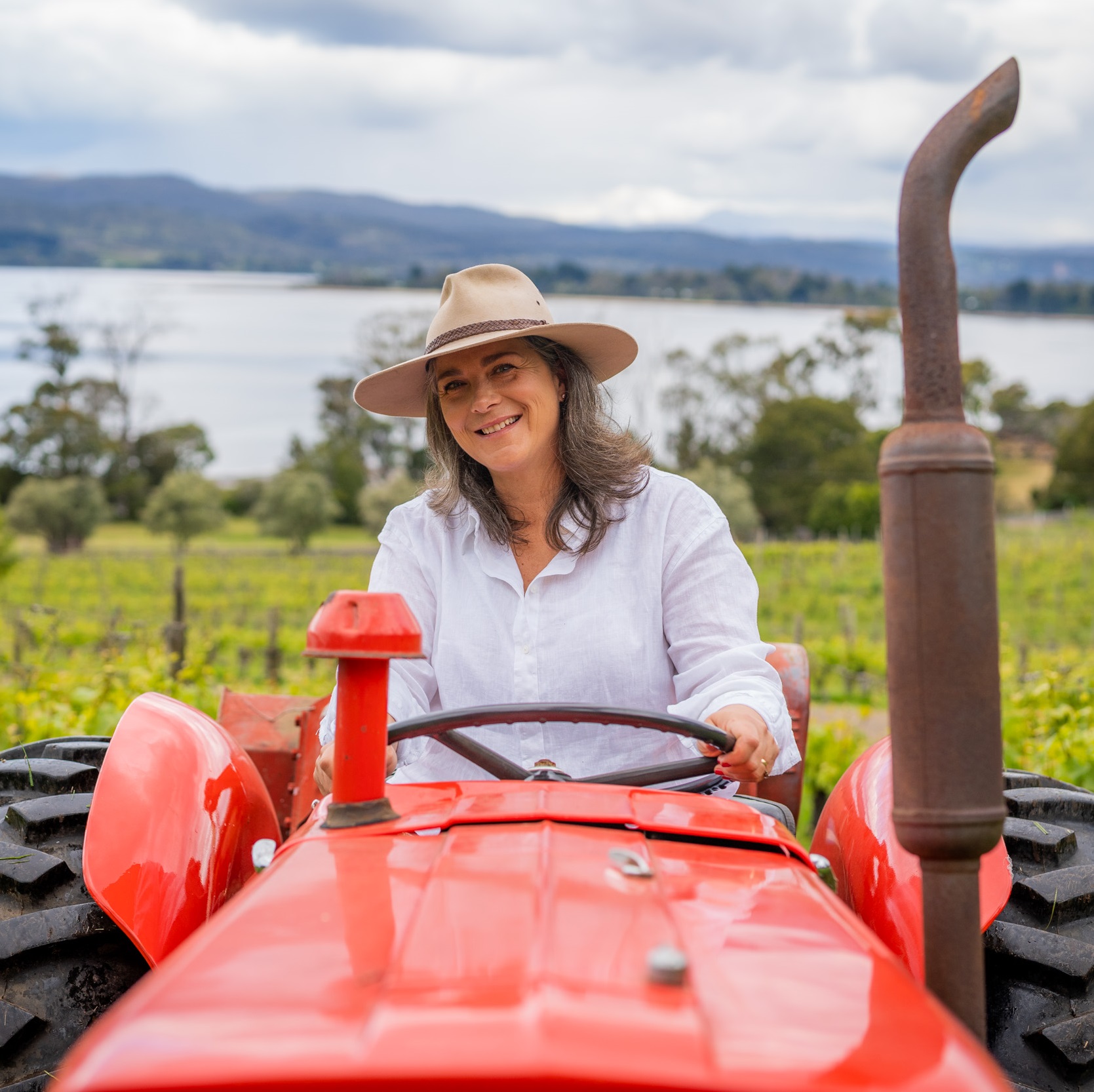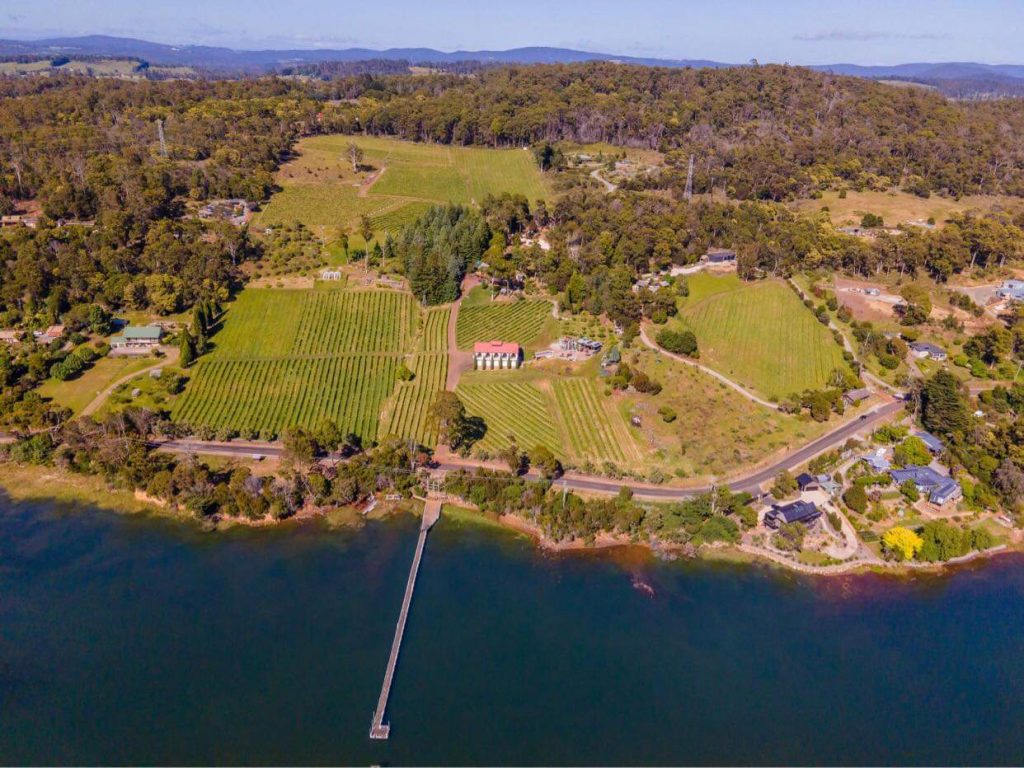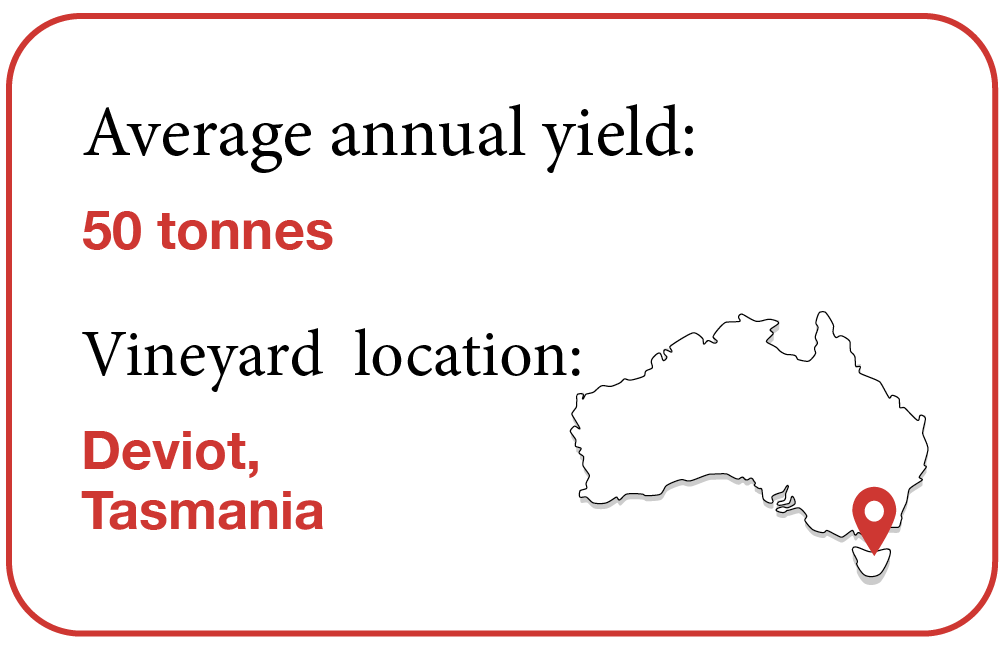PRODUCER PROFILE
CYNTHEA SEMMENS
Viticulturist, Marion’s Vineyard
Tasmania

The Grapegrower & Winemaker continues its monthly profile of the nation’s wine afficionados with Cynthea Semmens, a viticulturist in Tasmania’s Tamar Valley.
Journalist Samuel Squire caught up with Cynthea for a chat about her life in wine on Australia’s southernmost winegrowing island, as she shares her thoughts on the industry and on organic viticulture.
Tasmania is one of Australia’s cool-climate winegrowing regions, and it is home to some of the nation’s more exciting viticulture.
Many of the region’s producers, including Cynthea from Marion’s Vineyard and Beautiful Isle Wines, pride themselves on organic practices and keeping their vineyards as natural as possible.

Aerial view of Marion’s Vineyard
Tell us about how you got your start in the wine industry. Where did it all begin?
I was brought up in the wine industry in Tasmania. My Parents moved to Tasmania from San Francisco in early 1980 and planted a vineyard in the Tamar Valley. I helped to plant the first vines which turned 41 this year, and grew up disbudding, picking grapes and making cuttings!
Why did you become a viticulturist? Was it something you had always aspired to do?
Becoming part of the family business was something I aspired to after the first party we threw. Everyone loosened up and relaxed and shared stories, and empathised and became friends with people they didn’t know. It created an amazing feeling and I thought, ‘why not do this for a living?’
What are your thoughts on sustainable/organic/ biodynamic viticulture?
I started in marketing firstly at Roseworthy in early 1990. I worked in Napa in a wine magazine and as a tour guide for Mondavi. I wanted to get a little dirtier, so I returned to study winemaking at Charles Sturt in the late ‘90s. I am now our viticulturist (with no paper, just experience) and that is exactly where the wine is made. As a winemaker I just help it along.
How are you finding the transition from a traditional to an organic vineyard? Have there been hurdles along the way?
The biggest hurdle has been myself. Believing that it would work on my site with high rainfall and humidity, I have wanted to keep an ace up my sleeve. We began reducing synthetic fungicides over five vintages ago and had a successful fully organic spray programme in ‘19/‘20. This year we are on schedule to do that again.
With two full seasons organic, I will be ready to get formal organic transitioning. Purchasing a new sprayer and being in the vineyard every day has given me the confidence to continue. Our biggest hurdle is our under vine area. We are small – only eight hectares – and half of our vineyard has rocks and boulders which we will never get out. It doesn’t make sense just yet to purchase an under-vine weeder with such a small area.
So, we are finding native ground covers which are low lying and prostrate and allowing them to flourish. We also whipper snip and, funnily enough, we are bringing rocks back in as mulch.

What are the biggest changes to Australian viticulture that you have noticed over the years?
Adaptation. As an industry with often many family links to the land we occupy, many growers have adapted to varietals better suited to increasing temperatures and also soil management to retain and capture as much rain as possible, so their land remains viable.
I love seeing growers proud of their vineyard achievements in multi species cover cropping, crimping, compost making, under vine culture, increasing biodiversity, and taking synthetic chemicals out of their sites, and posting it to social media where everyone can see what they are doing. Responding positively to questions so others can learn is also inspiring.
The whole of Australia could be certified organic.
What do you think makes Tasmania so unique for viticulture?
Water. We have a reasonable amount of rainfall in the north and in the south we have access to water. Paired with our long growing season we can make the most of flavour concentration with balanced acidity and balanced sugar levels.
What would you say is your fondest experience/memory in viticulture so far?
Giving up glyphosate and then watching my worms and fungal hyphae grow! The bounce back from nature is magnificent and every day I see new bugs, new species of flowering plants and native grasses coming up where the ground was once barren.
Have you read anything in the Grapegrower & Winemaker that has inspired you to try different things in the vineyard?
We are gradually replacing all of our old treated trellising with new steel posts, which I found in the Grapegrower & Winemaker!
What do you like about the Grapegrower & Winemaker?
The magazine satisfies all my interests: viticulture, marketing, science and research, winemaking and personal stories!

on the Grapegrower & Winemaker